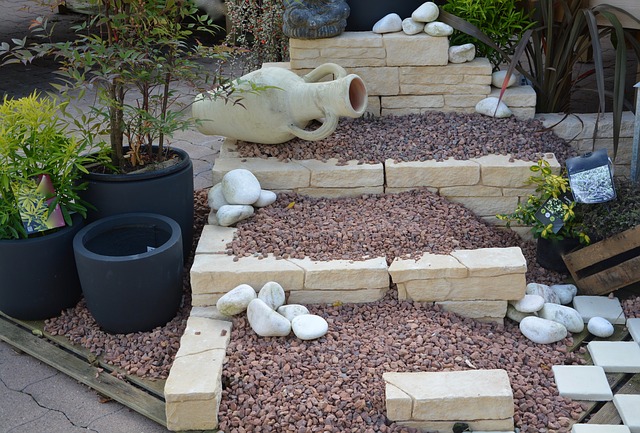Gravel Garden Maintenance Advice
Reading time: 4 minutes
What gravel is best for gardens?
There are several options for gravel in the garden, which can also cover other loose stones and chippings. This includes the purely practical, such as a simple coverage to put plant pots on, to the more decorative like a light, Mediterranean-style space. You can achieve very different finished looks for your garden just based on the kind of stones and gravel you choose.
-
Gravel and shingle – often used as an aggregate for concrete, and is made up of various-sized stones, usually featuring random colours. Coarse gravel and shingle are sourced from quarries, and made to be purely functional. You can use these for parts of a garden, but it’s more advisable to use decorative stones for aesthetic reasons.
-
Stone chippings – designed for use as decorative stones for gardens and patios, stone chippings are of a similar size, and sold in a single matching colour. Not only do they look good, but their smaller, more uniform size makes them more comfortable to walk on too. To achieve the Mediterranean look mentioned earlier, buff-coloured stone chippings are perfect.
-
Slate chippings – to bring a deeper tone to your gravel garden, slate chippings give a sophisticated feel. If you have concrete areas in your garden, plum slate chippings offer a pleasing contrast against steps and paving slabs.
Are gravel gardens low maintenance?
To put it simply, yes. One of the main things to consider when laying gravel across a lawn space is that it takes away the need for mowing the grass! Gravel gardens still require some maintenance when it comes to tending to plants and ensuring the garden is kept in good shape. However, you can make it a more labour-saving way to enjoy a garden with less regular upkeep.
What can you grow in a gravel garden?
If you’re worried about planting directly into the ground with stones then pots and raised beds are the perfect solution. That way you can control the soil and have more flexibility with the kinds of plants you choose for a low maintenance garden.
One of the main things to be aware of when planting among gravel is that small plants can struggle, or get swallowed easily. Medium to large plants, including shrubs and grasses, work very well among gravel and stones due to their more hardy nature. Climbing plants can also thrive when adding a trellis, or planted against a wall for some species.
Shrubs that grow among stones and gravel include:
-
Cistus – a Mediterranean flowering shrub commonly known as rock roses, cistus thrives in strong, hot sunshine. Maybe not always the best choice for a garden in the UK, but they will enjoy a good summer in dry conditions - ideal for gravel gardens.
-
Lavender – better suited to our climate, lavender grows well in dry, rocky environments, so doesn’t need to be watered too frequently.
-
Yucca – with their dense, spiking leaves all year round, yucca plants also bloom with attractive, large white flowers. Although hardy, they’re similar to the other shrubs that work in rocky conditions in that they prefer warm, dry weather.
How do you maintain a gravel garden?
From time to time, gravel can shift. This can lead to bare spots that need to be covered over again. Gravel and stones can also gather in uneven piles, so you may need to rake it occasionally to even it out. This can happen following heavy rainfall or after snow has thawed, and especially if your garden is on a slope. If you have a sloping garden, this may mean that loose gravel may not be practical on its own. Therefore, you might need to have a grid or framework laid first to hold most of the stones in place.
Before putting down a framework, or even without one, it’s a good idea to lay landscape fabric or weed membrane first. This helps to reduce the need for regular weeding, helping to keep your garden as low maintenance as possible.
If you want more landscaping ideas and tips, you can find them at Trade Corner. We have a host of helpful guides to get the best from your garden.
Disclaimer: The information contained on this page is intended as an overall introduction and is not intended as specific advice from a qualified professional. Travis Perkins aims to avoid, but accepts no liability, in the case that any information stated is out of date.




